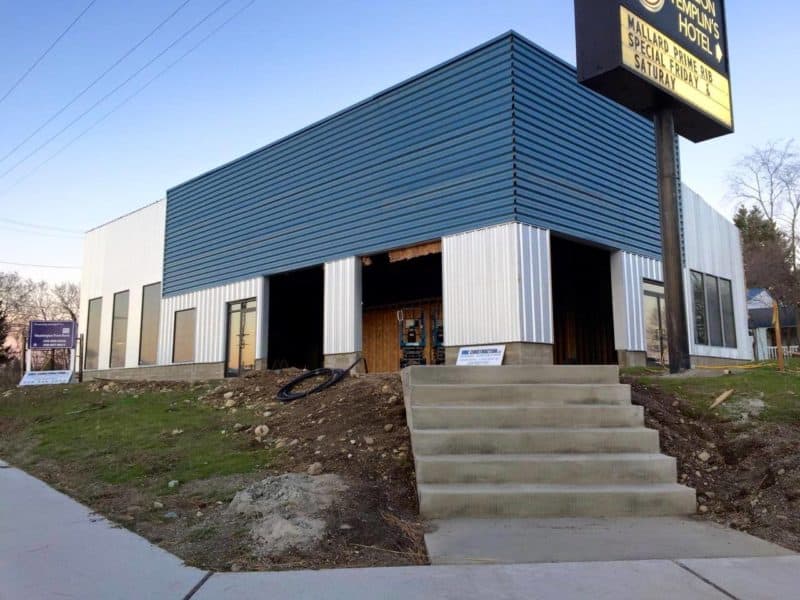
Microbreweries are popping up all over the country. Whether you work at a brewery, brew beer at home or just have a strong love of beer, building a microbrewery is a way to turn that passion into a business. Learning how to start a microbrewery takes a lot of information, though, from the equipment you need to the building specifications. Keep reading to find out what you need to know to start a microbrewery.

Just like a traditional brewery, a microbrewery is a facility for brewing beer, but on a much smaller scale. These businesses often sell on a local basis without the national reach of big-name breweries.
Here are some general characteristics of a microbrewery:
Quantity: A general definition of a microbrewery is a facility making no more than 15,000 barrels of beer each year.
Batch size: Microbreweries typically brew on a small-scale basis.
Brew types: The beers from microbreweries often have a seasonal or themed flavor. Brewers might experiment with their methods to come up with highly unique brews. They might focus on a particular style or have a signature type of brew.
Limited distribution: Most microbreweries don’t distribute their beers on a large scale, if at all.
Taxation: Microbreweries typically face lower taxation than large breweries.
It may be called a microbrewery, but there’s nothing small about the amount of space you will need to accommodate your beer brewing. The building is one of the most crucial aspects of starting your microbrewery. Not only does the square footage of the building need to match your needs, but it also needs tall ceilings, proper venting, access to high-pressure water and proper drainage.
When choosing a building, the location is a major factor. You want an easily accessible location that allows patrons to reach you and provides accessibility for delivery trucks. You need an entryway large enough to allow all of the brewery equipment inside the building. If you plan to expand, choose a building on a large piece of land to accommodate a larger building.
You have two main options for your building: an existing building or a custom-built new building. While an existing building seems alluring because it is already built, it comes with some serious considerations. The building may not have all of the features or the type of layout necessary for your business. Even though the building is already there, the time and cost to renovate it to fit your needs can delay the opening of your microbrewery.
Building your own facility lets you customize the size and layout, but you have to wait for the entire building to go up. The cost is also very high when you decide to build on your own. A steel building is a good compromise, offering quick construction with an often lower price tag.
A steel building is the best building for a microbrewery to meet the space and feature requirements. Consider these benefits of opting for a steel building as your microbrewery home:

The building size of your microbrewery must take into consideration several factors, including the size of your brewing system, expected yearly production, and the various purposes for, the space. For example, if you plan to only brew and store small amounts of beer at the facility, you won’t need as much space as you would if you also needed office space, a tasting room, and storage for larger batches of beer. Have a clear idea of what you need in your space before you decide on the size of the building.
As a general guide, you need the following amount of space for the brewing system:
3- or 5-barrel brewing systems: approximately 300 to 500 square feet
7-, 10- or 15- barrel brewing systems: approximately 550 to 1,200 square feet
This doesn’t account for any space needed for other brewing activities, storage or any additional uses. This gives you a starting point for the amount of space needed to accommodate the brewing system itself. Add in the space you need for any other storage and activities you will handle on-site. If you plan to use skid loaders or similar equipment, your microbrewery needs the extra space around the brewery equipment to easily maneuver that heavy machinery.
If your budget allows, choose a building design that gives you room to expand. Having extra space ready to go as your business grows lets you easily add a larger brewing system, have more storage or accommodate other facilities. On the other hand, you don’t want a huge amount of unused space when you first start your business, as you are paying for empty space that isn’t bringing in any income. Balancing the amount of extra space helps you prepare for the future without throwing away too much money.
The ceiling height is another space consideration of your facilities. If you’re building a facility or using a steel building, aim for a ceiling height of 12 to 14 feet in the brewing area. This ceiling height accommodates the equipment without facing restrictions during the brewing process.

The ceilings in fermentation and serving areas don’t need to be as high. Ceilings that are nine or 10 feet high are generally functional for those spaces. Your ceilings should be high enough to not interfere with production while being low enough to allow for economical heating and cooling of the space.
While not a size issue, the strength of the floor is another consideration when choosing or building your microbrewery space. The equipment alone is heavy. Once it is filled with the ingredients to brew your beer, the floor receives even more weight. You need a floor with the strength to safely handle the weight load of a microbrewery.
Microbreweries require specific designs when it comes to utilities. These features must meet local requirements, as well as the requirements of your brewing equipment. Check with the local building ordinance department and the manufacturer of your equipment to ensure your utility plans line up with the requirements. If you choose an existing building, the microbrewery may require a costly overhaul of the water, drainage, electrical and venting systems. If you opt for a custom-built steel building, these systems can go into the building to meet the specifications from the beginning.
Water is an essential component of the brewing process. Your microbrewery needs high pressure from the main water supply to accommodate the demands. The flow needs to be such that you get a uniform flow into your brewing system without pressure fluctuations with water use in other areas of the building. You may need a filtering system to make city water suitable for your production. Plan for water access in kegging and bottling areas if you plan to handle those tasks in house.
Reliable electrical service is another essential element in building a microbrewery. Brewing equipment may vary in terms of electrical requirements. Work with the manufacturer of your brewery equipment to ensure your building’s electrical system can handle the demands of the equipment.

Microbrewery buildings require proper drainage in a number of areas. You need drainage in all of the following areas if your microbrewery design includes them:
Not only do you need drainage systems in those areas, but those drains need to flow well to handle large volumes of liquid without backing up into your workspace. A minimum drain opening diameter of four inches is typically necessary to keep up with the demands of a brewery environment. Durable grating made of stainless steel or fiberglass protects the integrity of the drains while keeping the grates easy to clean.
Another aspect of drainage is the slope of the floor. Adequate floor drains won’t make a difference if the floor is perfectly level or slopes away from the drains. The floor needs a gentle slope toward the drain to encourage liquids to flow directly toward those drains. This saves you work and minimizes messes.
Venting is another essential component in the setup of your microbrewery. The venting system constantly draws fresh air into the brewery and helps maintain the proper pressure in the brewing equipment.
All the steam generated by the brew kettles needs somewhere to go, which is where a brewery-specific venting system comes into play. A flue vents the steam from the brew kettle. Exhaust flues are also necessary, with the specific location and type of flue depending on the type of system you use. Your setup must also provide make-up air in areas where using exhaust systems. Work with your equipment supplier to ensure your venting meets the requirements to have a safe setup.
Air conditioning also works into the effective operation of the brewhouse. Air conditioning helps to control the air temperature as well as the humidity in the brewing facility.
Running a microbrewery involves a lot of cleaning. All surfaces must remain sanitary to meet regulations for a commercial microbrewery. The finishes you choose for your brewery facility play a role in how easy it is to meet those sanitation standards.
All surfaces, including walls and ceilings, should be washable. This enables you to keep the level of cleanliness required without damaging wall surfaces. Steel buildings work particularly well for this cleaning aspect of the building design.
Floor finishes also need to be easy to clean, but they also need a durable finish to hold up to the brewing process. Sealed floors that resist acidic and alkaline materials are essential to avoiding damage. A floor that can’t handle those materials that are part of the brewing process ends up with stains and damage. They simply won’t hold up to the everyday activities in your brewery. When you use a steel building for your microbrewery, you have the ability to design a durable floor system with the sealing necessary to prevent damage.
When figuring out how to build a microbrewery, planning your space is a key step. Be very clear on all of the specific requirements based on local and state law, as well as the equipment-specific requirements.
The layout plans for your microbrewery depend on several factors including:
Working with an architect and your equipment manufacturer helps you create a functional layout for your brewery. The setup should allow for a logical flow through the brewing process. Essentially, you want a layout that provides easy access to the materials needed in each step and easy movement of the beer from one phase to the next.
The general steps in the brewing process include:
It makes sense to arrange the different areas that handle each step in a progressive way, so the beer flows smoothly through the process. This simplifies the workload for you and your staff.
Another consideration is the type of activities in a particular area. Placing wet work areas next to dry areas puts both areas at risk for contamination and issues. The same idea works for hot and cold work areas. Placing a very hot area next to an area that must remain cold can inhibit proper temperature maintenance.
If your space contains non-brewery facilities, such as administrative items, consider the type of proximity you want to the brewing facilities. You might want your office near the brewing facilities so you can easily access both spaces as your workload demands.
If you plan to have a tasting room, consider the location and how that fits in with the brewing process. When people come to your tasting room, they want to get to know your beer brand and your processes. If possible, arrange your tasting room to allow a view of the brewing facilities. This might be with a large window, an overhead view or another way to let visitors have a glimpse of your process. Give tasting room visitors a way to connect with the people involved with the actual brewing process.
Many microbreweries offer tours of the facilities. If this is part of your eventual plan, create a layout that safely allows visitors to check out your facilities. This means providing enough clearance around equipment and out of the way of your staff to keep the tour guests safe without interrupting your operations.

Learning all of the steps in building a microbrewery can feel overwhelming at first. Breaking down the job into smaller tasks helps the project feel more manageable. Taking your time and doing things correctly helps keep your stress under control and saves you money in the long run.
Follow these tips when planning and building your microbrewery:
You perfected your beer recipes, and now you have all the information necessary to get started on the construction of your microbrewery. Contact MBMI Metal Buildings with all of your questions about using one of our custom-built metal buildings as your microbrewery location.